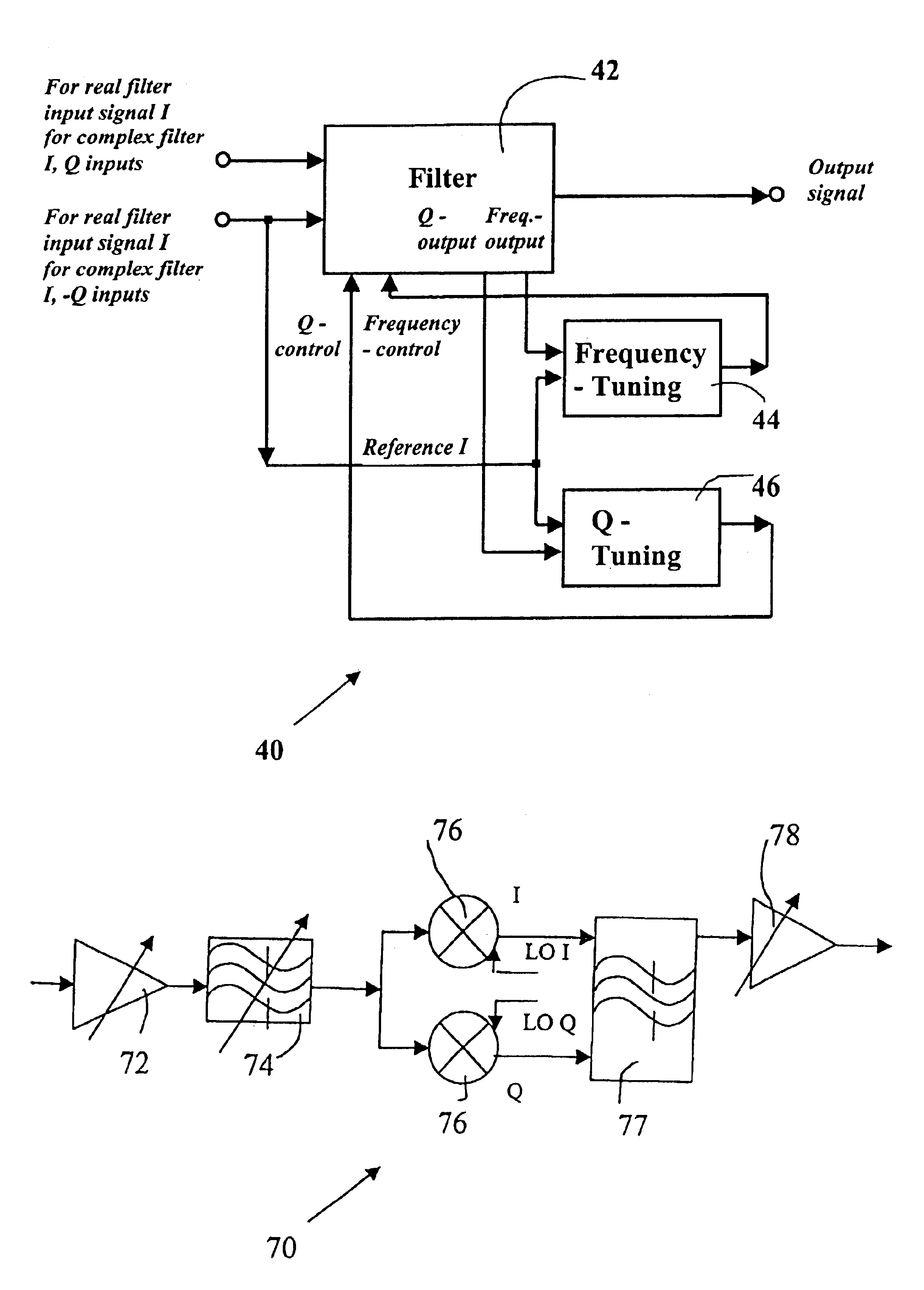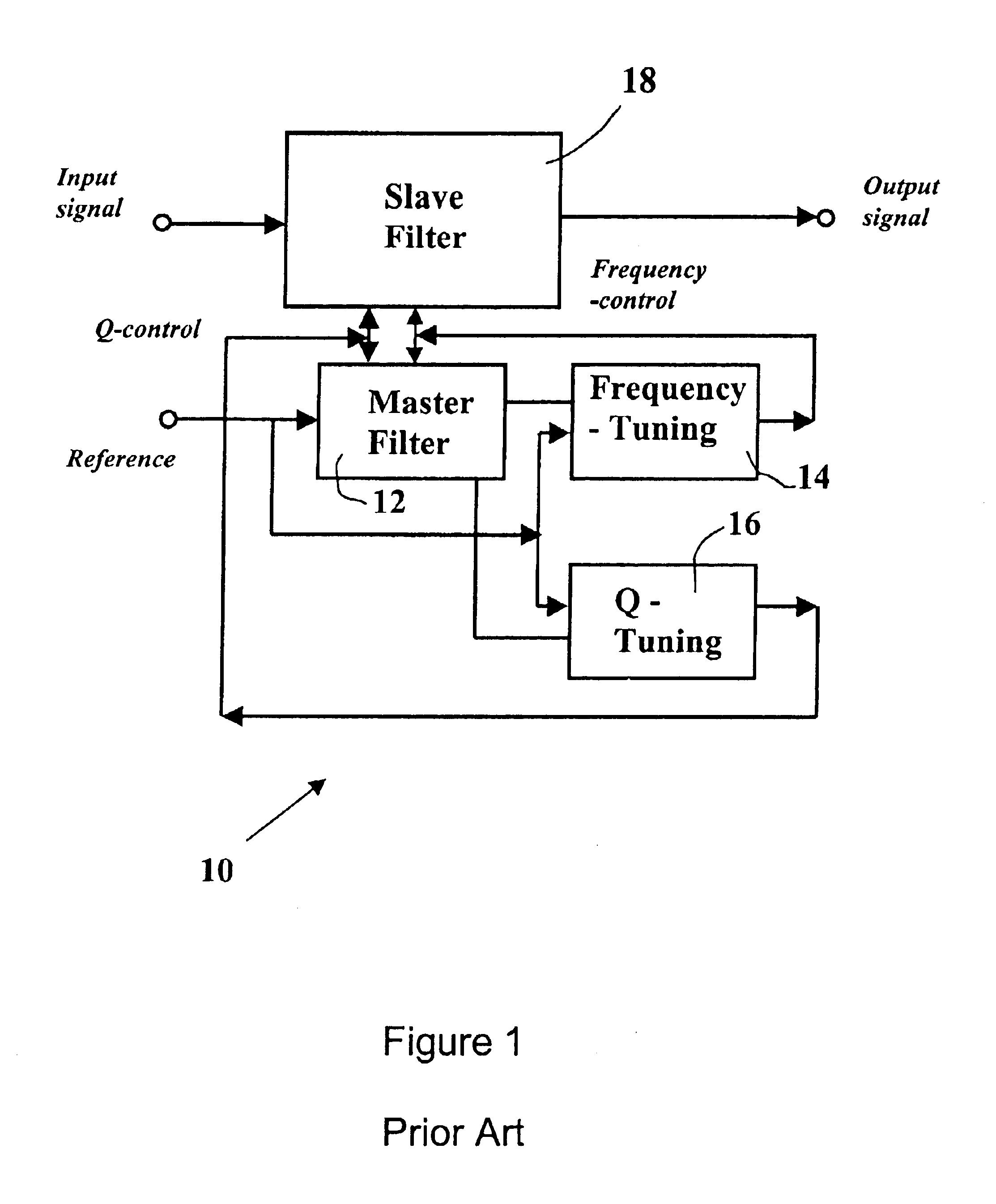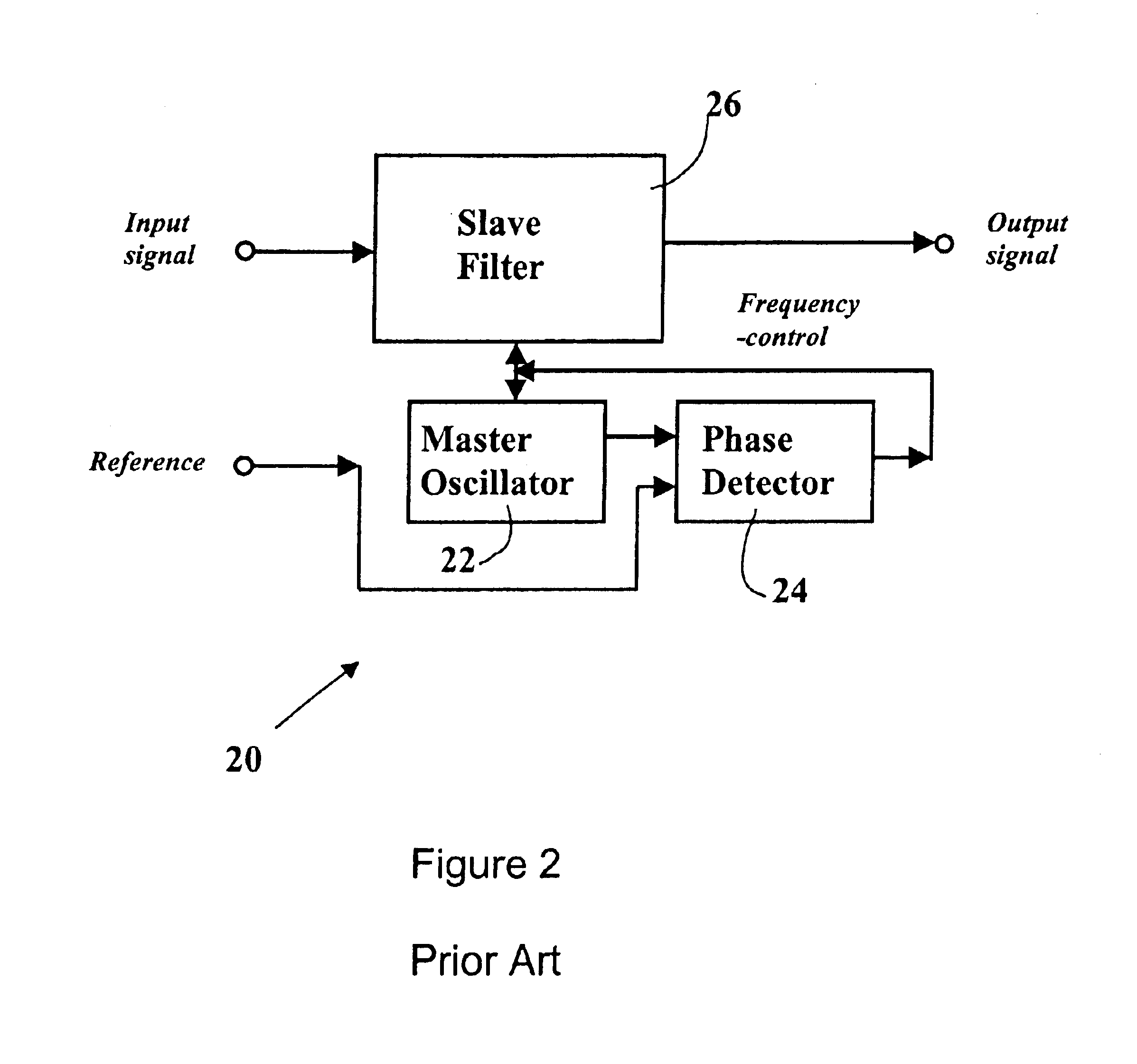Fully integrated automatically-tuned RF and IF active bandpass filters
a filter and fully integrated technology, applied in waveguide type devices, transmission, line-transmission details, etc., can solve the problem of 40 db attenuation of the first bp reference, and achieve the effect of good linearity and sufficient attenuation
- Summary
- Abstract
- Description
- Claims
- Application Information
AI Technical Summary
Benefits of technology
Problems solved by technology
Method used
Image
Examples
Embodiment Construction
[0023]Referring to the FIG. 4, the present automatically-tuned filter system is illustrated, and is generally identified by the numeral 40. The input signal enters the filter circuit 42, one of the filter outputs is connected to the frequency-tuning block 44 and the other one is connected to the Q-tuning block 46. The output of the frequency-tuning block 44 is then fed back to the filter 42 in order to control its frequency. Similarly, the output of the Q-tuning block 46 is then fed back to the filter 42 in order to control its Q.
[0024]The output of the filter 42 may also serve as a frequency- and / or Q-tuning output. In such a case the original frequency- or Q-tuning output(s) is (are) redundant and is (are) not used.
[0025]If the filter circuit 42 is a real band-pass filter such as filter 74 illustrated in FIG. 7 the reference is placed at frequency f2 that is offset from the filter center frequency f1 by Δf=f2−f1. This situation is illustrated in FIG. 5a. Since the reference passes...
PUM
 Login to View More
Login to View More Abstract
Description
Claims
Application Information
 Login to View More
Login to View More - R&D
- Intellectual Property
- Life Sciences
- Materials
- Tech Scout
- Unparalleled Data Quality
- Higher Quality Content
- 60% Fewer Hallucinations
Browse by: Latest US Patents, China's latest patents, Technical Efficacy Thesaurus, Application Domain, Technology Topic, Popular Technical Reports.
© 2025 PatSnap. All rights reserved.Legal|Privacy policy|Modern Slavery Act Transparency Statement|Sitemap|About US| Contact US: help@patsnap.com



